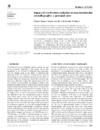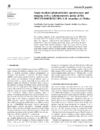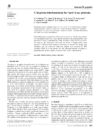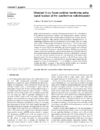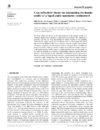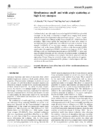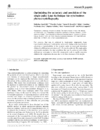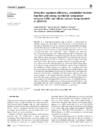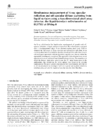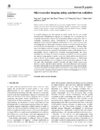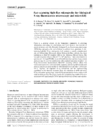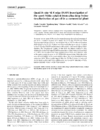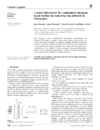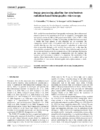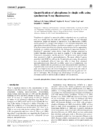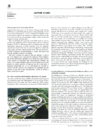issue contents
July 2010 issue

Cover illustration: Synchrotron radiation X-ray angiography of part of a mouse showing the mouse blood vessels in the body (see Liu, Sun, Zhao, Liu, Gu, Li, Xiao and Xu, pages 517-521). The sample was imaged at beamline BL13W of the SSRF in China.
facility information
feature articles
Free 

This article, largely based on personal experiences of the authors, reviews the early history of the application of synchrotron radiation to structural biology, and particularly protein crystallography, to show the tremendous impact that this experimental innovation has had on these disciplines.
research papers
First results on the implementation of angle-resolved photoemission mode of measurements to the scanning photoemission microscope at the SPECTROMICROSCOPY-3.2L beamline of Elettra synchrotron light source are reported. The technical aspects as well as test results of imaging and spectroscopy of highly oriented pyrolitic graphite are discussed.
Micro-fabricated bi-prisms have been used to create an interference pattern from an incident hard X-ray beam, and the intensity of the pattern probed with fluorescence from a 30 nm-thick metal film.
A single-crystal diamond was used as a transmissive beam-position monitor on the DORIS F4 bending-magnet white beamline. Using a Libera Brilliance system with signal detection at the synchrotron radiofrequency, a position resolution below 50 nm was achieved.
Open  access
access
 access
accessThe determination of out-of-plane density profiles of a confined molecular liquid by synchrotron X-ray reflectivity is presented.
A method for the simultaneous collection of small- and wide-angle X-ray scattering data at high X-ray energies is presented.
Download citation


Download citation


The accuracy achieved in single-pulse pump-probe Laue experiments at beamline 14-ID at APS is estimated to be 3–4%.
The performances of Si and CdTe pixel photon-counting detectors based on the XPAD3S circuit are evaluated in terms of the detective quantum efficiency, modulation transfer function and energy resolution with a synchrotron beam. X-ray interaction processes in both sensors are described and analytical models are compared with experimental data.
Multilayers of different composition (W/Si, Mo/Si, Pd/B4C), periodicity (from 2.5 to 5.5 nm) and number of layers have been characterized in terms of their performance as monochromators for synchrotron-based hard X-ray micro-imaging.
Open  access
access
 access
accessX-ray reflectivity measurements of liquid surfaces were performed using a recently developed liquid-interface reflectometer at SPring-8. The full range of X-ray specular and off-specular reflections was obtained in an extremely short time by a two-dimensional single X-ray photon-counting pixel array detector, which offers enormous potential to determine the out-of-plane and in-plane structures at an interface simultaneously.
Whole-body mouse microangiography was performed using synchrotron X-ray imaging.
The commissioning of the recently upgraded BioCAT microprobe, a fast-scanning high-flux instrument dedicated to imaging and microXAS experiments on biological tissues, is described.
Quasi in situ Ni K-edge EXAFS measurement in combination with a high-pressure chamber revealed that the Ni–Mo–S phase was preserved on the spent NiMo catalyst from ultra-deep hydrodesulfurization of gas oil in a commercial plant for two years.
A ring artefact suppression method based on ideas of the theory of inverse problems is proposed for the case of parallel-beam geometry.
A software environment has been developed for processing and reconstructing online the large amount of data generated at TOMCAT, a synchrotron-radiation-based tomographic microscopy beamline of the Swiss Light Source at Paul Scherrer Institute, Switzerland. It has been designed to minimize user interaction and maximize the reconstruction speed and therefore optimize beam time usage.
Open  access
access
 access
accessPhosphorus abundance was quantified in individual phytoplankton cells by synchrotron X-ray fluorescence and compared with bulk spectrophotometric measurements to confirm accuracy of quantification. Figures of merit for P quantification on three different types of transmission electron microscopy grids are compared to assess possible interferences.
current events
Free 



 journal menu
journal menu


















